No Fees
Unless We Win
Millions Recovered!

Oversize Load Truck Accidents in Seattle: When Wide Loads Cause Devastating Crashes
Oversize load trucks move cargo that exceeds standard legal dimensions for width, height, length, or weight. These massive shipments require permits, escort vehicles, and careful planning to travel safely on Seattle’s highways. When companies cut corners or fail to follow safety rules, the result can be devastating multi-vehicle crashes that cause life-changing injuries. A Seattle oversize load truck accident lawyer can investigate every detail, identify all liable parties, and pursue full compensation for your injuries and losses.
If you or a loved one was hurt in an oversize load accident, you don’t have to face the aftermath alone. Call (877) 999-9999 for a free consultation with Boohoff Law. You pay no fees unless we win your case.
Key Takeaways for Seattle Oversize Load Truck Accidents
- Oversize loads must comply with Washington State permit requirements, including width limits, escort vehicles, and approved routes.
- Multiple parties may share liability, including the trucking company, permit holder, pilot car operators, and cargo owners.
- Carriers must meet federal minimum financial responsibility; multiple policies (carrier, shipper, permit holder) may apply.
- Victims of oversize load accidents can pursue compensation for medical expenses, lost wages, and pain and suffering.
- Most personal injury claims in Washington must be filed within 3 years from the crash.
Seattle Legal Services
- Seattle Personal Injury
- Seattle Car Accident
- Seattle Bus Accident
- Seattle Truck Accident
- Seattle Bicycle Accident
- Seattle Burn Injury
- Seattle Motorcycle Accident
- Seattle Drunk Driving
- Seattle Nursing Home Abuse
- Seattle Slip and Fall Accidents
- Seattle Premises Liability
- Seattle Wrongful Death
- Seattle Dangerous Drugs
- Seattle Dog Bite
- Seattle Pedestrian Accident
- Seattle Medical Malpractice
- Seattle Construction Accident
- Seattle Workers’ Compensation
Find out what your case is worth.
What Qualifies as an Oversize Load in Washington?
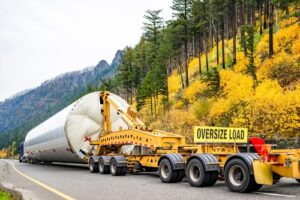 Washington State defines specific dimensions that trigger oversize load requirements. Loads exceeding these limits need special permits and safety measures to travel legally on public roads.
Washington State defines specific dimensions that trigger oversize load requirements. Loads exceeding these limits need special permits and safety measures to travel legally on public roads.
Width restrictions begin at 8 feet 6 inches. Anything wider requires permits and warning flags. Height limits reach 14 feet on most routes, subject to structure clearances shown on the WSDOT route map. Length maximums vary by vehicle configuration.
Legal Requirements for Oversize Loads
The Washington State Department of Transportation mandates comprehensive safety protocols for oversize loads. These requirements exist because oversized cargo creates unique dangers on public roads, raising the question are oversized trucks so dangerous when companies skip critical permits or ignore escort vehicle rules.
Permit holders must plan approved routes avoiding low bridges and narrow passages. Time restrictions may limit travel to daylight hours with good visibility. Some loads cannot move during rush hour traffic or adverse weather conditions.
Escort Vehicle Requirements in Washington
In Washington, escort needs are regulated by WAC 468-38-100, as amended. These rules establish clear requirements based on load dimensions and roadway types.
On two-lane highways, loads wider than 11 feet generally require two escorts (front and rear). On multilane divided highways, loads wider than 14 feet typically require at least one rear escort. Loads at 14 feet 6 inches or taller usually need a front escort with a height pole.
WSDOT may require additional escorts based on specific route features. Bridge approaches, construction zones, and urban areas may need extra pilot vehicles.
Common Causes of Oversize Load Accidents in Seattle
Oversize load accidents stem from various failures in planning, execution, and safety compliance. Investigation often reveals multiple contributing factors due to the complexities of these accidents.
Improper Route Planning
Route planning errors cause many oversize load accidents in Seattle. Permit applications require detailed route surveys to identify potential hazards.
For example, the Ship Canal Bridge’s narrow lanes challenge wide loads during windy conditions. Downtown Seattle’s steep grades create additional risks. Port of Seattle corridors and the SR-18/SR-167 interchange often see heavy-haul traffic and require careful navigation.
Inadequate Warning Systems
Proper warning systems help other drivers avoid oversize loads safely. When these systems fail, motorists cannot judge safe passing distances or clearances.
Missing or improperly placed flags leave load edges unmarked in drivers’ blind spots. Burned-out warning lights reduce visibility during dawn or dusk hours. Faded or missing “OVERSIZE LOAD” signs fail to alert approaching traffic.
Escort Vehicle Failures
Escort vehicles serve as the first line of defense protecting other motorists. Their failures often directly cause serious accidents:
- Communication breakdowns between escort and truck drivers
- Radio failures during complex intersection navigation
- Escort drivers abandoning proper positions
- Inexperienced operators lacking proper training
Some escort services hire unqualified drivers to reduce costs. This prioritizes profits over public safety.
Types of Oversize Load Accidents
Oversize load accidents take various forms, each presenting unique dangers and injury patterns. Understanding these accident types helps to establish how negligence caused your injuries, and learning about common types of truck accidents provides important context for proving fault and pursuing fair compensation.
Bridge Strikes and Overpass Collisions
Height miscalculations cause devastating bridge strikes throughout Seattle. These violent impacts can damage structures and rain debris onto vehicles below. The consequences extend far beyond the initial collision.
Bridge strikes pose serious infrastructure threats that are tracked by transportation authorities. Each impact requires expensive inspections and potential repairs. Meanwhile, falling concrete and steel endanger everyone nearby.
Some crashes involve permits with inaccurate height data or unaccounted load shift. Companies may fail to verify actual dimensions before transport. Load shifting during transport can increase overall height beyond permitted limits.
Wide Load Sideswipes
Oversize loads that extend beyond normal lane widths create sideswipe risks. These accidents occur when wide cargo encroaches into adjacent lanes without adequate warning. The massive weight difference makes these collisions particularly dangerous.
Merge areas and lane changes become extremely hazardous near wide loads. Drivers cannot judge safe distances without proper markings. Escort vehicles should control these movements but sometimes fail to maintain proper positions.
Multi-lane highways like I-5 see frequent wide load sideswipes. The cargo’s extended width leaves no margin for error, and even minor steering corrections can send oversized loads into neighboring vehicles.
Cargo Shift and Securing Failures
Improperly secured oversize cargo can shift catastrophically during transport. These load shifts cause rollovers, dropped cargo, and loss of vehicle control. The results often involve multiple vehicles in chain-reaction crashes.
Federal Motor Carrier Safety Regulations specify exact securing requirements based on cargo type and weight. Violations of these rules show clear negligence. Our attorneys may work with cargo securing experts to identify failures.
Weather conditions and road surfaces affect cargo stability. Seattle’s frequent rain creates slippery conditions that require extra securing measures. Sharp turns and steep grades increase shift risks that proper planning should address.
Injuries From Oversize Load Accidents
 The massive size and weight of oversize loads create particularly severe crash forces. Victims often suffer life-altering injuries and require extensive medical treatment.
The massive size and weight of oversize loads create particularly severe crash forces. Victims often suffer life-altering injuries and require extensive medical treatment.
Catastrophic Crush Injuries
Oversize loads can weigh over 100,000 pounds. These massive forces create devastating impacts:
- Multiple body systems damaged simultaneously
- Broken bones and internal bleeding
- Permanent disabilities requiring lifetime care
Standard vehicle safety features cannot protect against such extreme weight differentials.
Traumatic Brain Injuries From Debris
Bridge strikes and cargo failures send heavy debris flying at high speeds. These projectiles can penetrate windshields and cause severe head trauma. Even helmeted motorcyclists face extreme danger from falling cargo.
Motor vehicle accidents remain a leading cause of traumatic brain injury. Oversize load accidents create particularly severe impact forces. Secondary injuries from debris multiply the trauma.
Spinal Cord and Neck Injuries
The extreme forces in oversize load collisions frequently damage spinal structures. These injuries can cause permanent paralysis and require lifetime care. Medical costs can run into the millions over a lifetime, depending on severity.
Determining Liability in Oversize Load Accidents
Oversize load accidents typically involve multiple potentially liable parties. Washington law allows pursuing claims against all negligent parties, making it wise to hire a truck accident attorney who can investigate each responsible party and build a strong case for full compensation.
Trucking Company Responsibilities
Trucking companies bear primary responsibility for safe oversize load transport. They must obtain proper permits, plan safe routes, and verify driver qualifications.
Companies must confirm drivers hold special endorsements for oversize load operation. Hiring unqualified drivers shows negligent entrustment. Equipment maintenance becomes critical with the extra stress these loads create.
Permit Holder Liability
Permit holders must ensure compliance with all permit conditions. Violations create direct liability for accidents.
Permit applications require accurate load measurements. Inaccurate dimensions in the application may support claims in serious injury cases. Permit holders cannot avoid responsibility by subcontracting transport.
Cargo Owner and Shipper Liability
Cargo owners who demand unrealistic delivery schedules may share liability. Time pressure can lead to safety shortcuts. Shippers must provide accurate cargo information and proper loading.
Seattle Oversize Load Truck Accident Lawyer
Boohoff Law Seattle Office
920 5th Ave, Suite 1530, Seattle, WA 98104
Free Consultation
We Are Here For You 24/7
Steps to Take After an Oversize Load Accident
 Recovering from an oversize load accident involves more than medical treatment. These cases are highly technical, often involving multiple parties, special permits, and federal regulations. You need a truck accident lawyer to guide you through the investigation, preserve critical evidence, and protect both your health and your legal rights.
Recovering from an oversize load accident involves more than medical treatment. These cases are highly technical, often involving multiple parties, special permits, and federal regulations. You need a truck accident lawyer to guide you through the investigation, preserve critical evidence, and protect both your health and your legal rights.
Continue Medical Care and Documentation
Oversize load accidents often cause serious injuries that require long-term treatment. Follow through with medical appointments, therapy, and specialist care. Keep records of bills, diagnostic tests, prescriptions, and recommendations. A written log of your symptoms and limitations can also help demonstrate the lasting impact of your injuries.
Preserve Accident-Related Evidence
Evidence from oversize load crashes may disappear quickly if not secured. Save any photos, vehicle repair estimates, or accident reports you received. Hold on to correspondence from insurers. Your attorney can obtain critical records like permits, escort vehicle logs, and inspection reports that may otherwise be lost.
Track Financial Losses
Accident-related expenses go far beyond medical bills. Maintain records of lost wages, reduced work capacity, mileage to medical visits, and household adjustments required during your recovery. These details play an important role in calculating fair compensation.
Be Cautious With Insurance Companies
Oversize load claims often involve several insurance policies, including the trucking company’s coverage and sometimes additional shipper or permit holder policies. Federal law requires carriers to maintain coverage between $750,000 and $5 million depending on cargo type. Before speaking with adjusters or signing documents, consult an attorney. Insurance companies representing different parties may use information that you share in ways that harm your claim.
Compensation in Oversize Load Accident Cases
Washington law permits the recovery of comprehensive damages from oversize load accidents. These cases often involve severe injuries that justify substantial compensation. Our attorneys pursue all available damages under state law, guiding you through the claim process for truck accidents to document losses, meet deadlines, and seek the maximum compensation available.
Medical Expenses and Future Care
Oversize load accidents frequently cause injuries that require lifetime medical care. Current medical bills represent only the beginning. Future surgeries, therapy, and adaptive equipment must be calculated accurately.
Expert testimony establishes future medical needs based on injury severity. Life care planners project costs for decades of treatment. These calculations often reach millions for spinal cord or brain injuries.
Home modifications may become necessary for people with permanent disabilities. Wheelchair ramps, accessible bathrooms, and specialized equipment add substantial costs. Washington law allows recovery for all reasonable accommodations that improve quality of life.
Lost Income and Earning Capacity
Serious injuries from oversize load accidents often prevent victims from returning to their previous employment. Lost wages include both past income and future earning capacity. Calculation requires careful analysis of career trajectories and limitations.
Self-employed individuals face unique challenges proving income losses. Tax returns, contracts, and business records document earning history. Vocational experts project how injuries limit future business operations.
Some victims can work, but only in reduced capacities. The difference between their previous and current earning ability represents recoverable damages. Benefits losses, including health insurance and retirement contributions, add to total compensation.
Pain, Suffering, and Quality of Life
Washington law recognizes non-economic damages for pain and suffering. These damages acknowledge that injuries cause more than financial losses. Quality of life changes deserve fair compensation.
Physical pain from catastrophic injuries may last permanently. Chronic pain affects every aspect of daily life. Pain management treatments, while helpful, rarely eliminate suffering completely.
Emotional trauma from near-death experiences in oversize load accidents creates lasting psychological injuries. Many victims develop driving anxiety or PTSD. Professional counseling helps but cannot erase traumatic memories.
How Boohoff Law Handles Oversize Load Cases
Our approach to oversize load accidents combines technical knowledge with compassionate client service.
Comprehensive Investigation Process
We begin investigating immediately to preserve crucial evidence. Permit records reveal whether proper authorizations existed. We subpoena all applications and approvals.
Electronic logging devices and GPS data show route compliance. Communication records between escort and truck drivers reveal coordination failures. This evidence disappears quickly without prompt preservation.
Working With Technical Experts
Accident reconstructionists analyze how permit violations contributed to crashes. Trucking safety experts review company policies and training records. Their testimony translates technical violations into clear evidence.
Pursuing Fair Compensation
Our attorneys pursue compensation from all liable parties. Multiple insurance policies often apply, requiring strategic coordination.
Settlement negotiations require strong liability evidence and damage documentation. When offers fail to reflect case values, we proceed to trial, especially when an insurance company offers a settlement that undervalues your claim. Clear safety violations may support substantial verdicts.
FAQ for Seattle Oversize Load Truck Accident Lawyer
What permits are required for oversize loads in Washington State?
Washington requires permits for loads exceeding 8.5 feet wide, 14 feet high, or legal length limits. The WSDOT Commercial Vehicle Services issues single trip and annual permits. Permit types vary based on dimensions, weight, and cargo type. Violations of permit conditions create strong liability evidence in accident cases.
Can I still recover damages if the oversize load had proper permits?
Yes, having permits doesn’t eliminate liability for accidents. Permit holders must still follow all safety requirements and exercise reasonable care. Accidents can result from poor execution despite proper paperwork. Our attorneys examine whether permit conditions received proper compliance during transport.
How long do I have to file an oversize load accident claim in Washington?
Washington’s statute of limitations provides three years from the accident date for personal injury claims. However, some evidence disappears quickly without preservation efforts. Electronic logs, GPS data, and witness memories fade rapidly. Contact attorneys immediately to protect crucial evidence.
What if the oversize load truck was from another state?
Interstate trucking companies must carry insurance that meets federal requirements regardless of their home state. Federal regulations apply uniformly to all commercial vehicles operating across state lines. We pursue claims against out-of-state companies and can handle jurisdictional complexities.
Who pays for my medical bills while my case is pending?
Your health insurance or auto insurance medical coverage typically pays initial bills. We document all expenses for later reimbursement from at-fault parties. Some medical providers offer treatment liens, deferring payment until case resolution. Never let financial concerns prevent necessary medical care.
Protecting Your Rights After an Oversize Load Accident
 Oversize load accidents create complex legal challenges requiring experienced representation. Multiple liable parties, technical regulations, and severe injuries complicate these cases. Professional legal help levels the playing field against trucking companies and their insurers.
Oversize load accidents create complex legal challenges requiring experienced representation. Multiple liable parties, technical regulations, and severe injuries complicate these cases. Professional legal help levels the playing field against trucking companies and their insurers.
Boohoff Law understands the devastating impact these crashes have on victims and families. We investigate permit violations, safety failures, and regulatory compliance to build strong cases. Our attorneys work with technical experts to pursue fair compensation under Washington law.
Recovery is personal. If an oversize load accident has disrupted your life, we’re here to help. Call (877) 999-9999 anytime for your free consultation. We’ll meet you wherever convenient—at home, in the hospital, or our Seattle office. There are no fees unless we win your case.
Recovery is personal.
We’re here for you.
We’re close by. And if you can’t make it to us, we’ll meet you where you need us, at home or in the hospital.
You're better off with Boohoff.


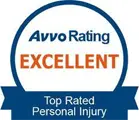
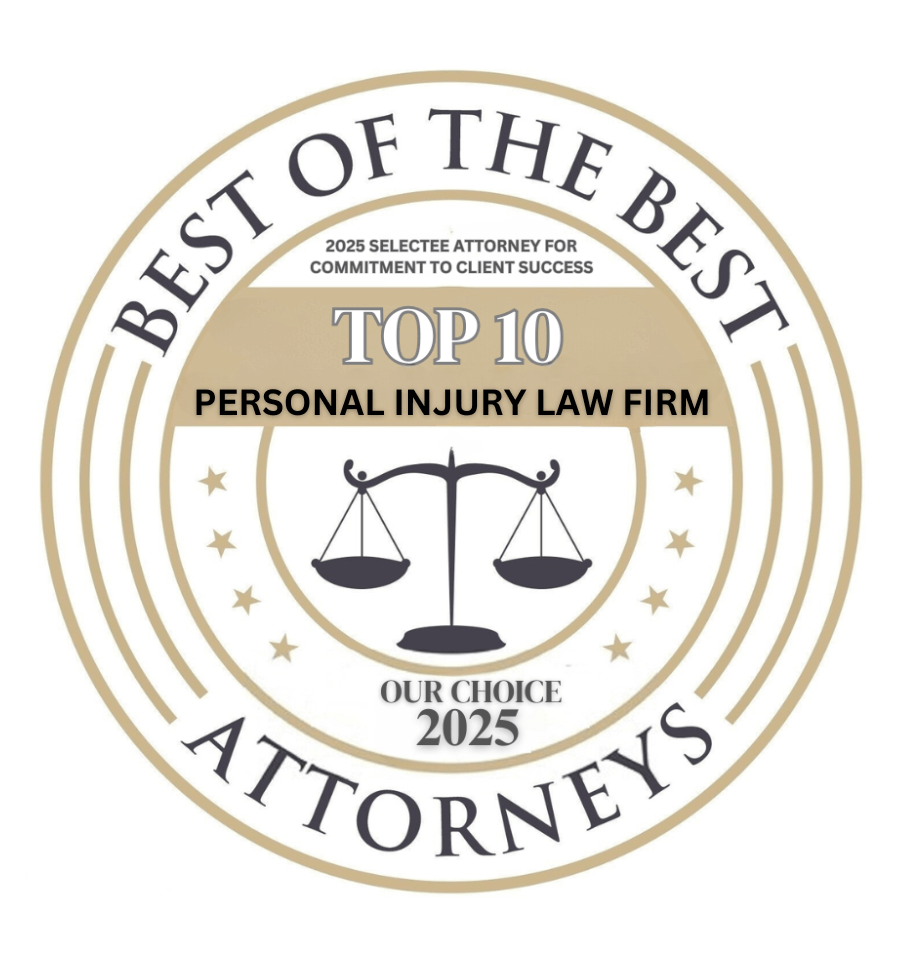
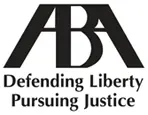
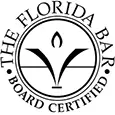

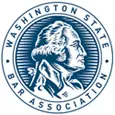



The information on this website is for general information purposes only. Nothing on this site should be taken as legal advice for any individual case or situation. This information is not intended to create, and receipt or viewing does not constitute, an attorney-client relationship.
available 24/7
(877) 999-9999
